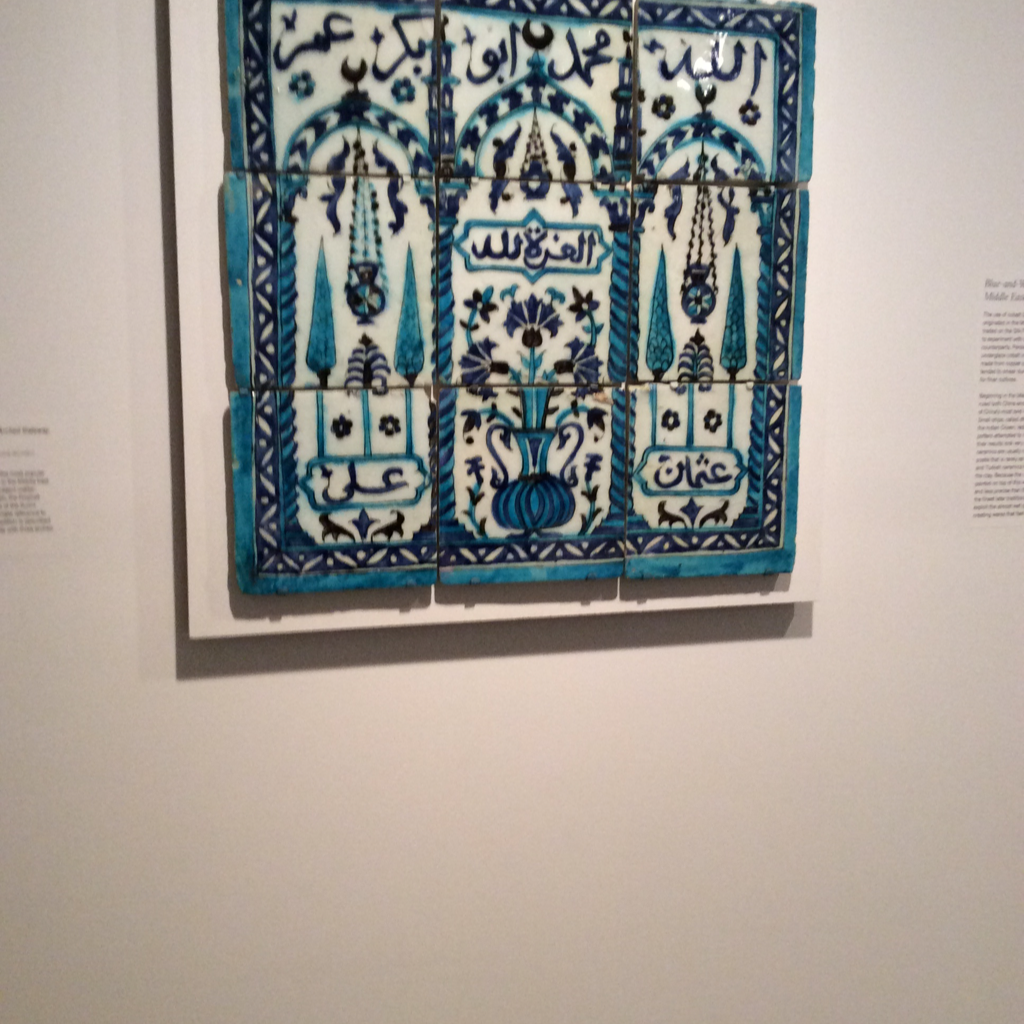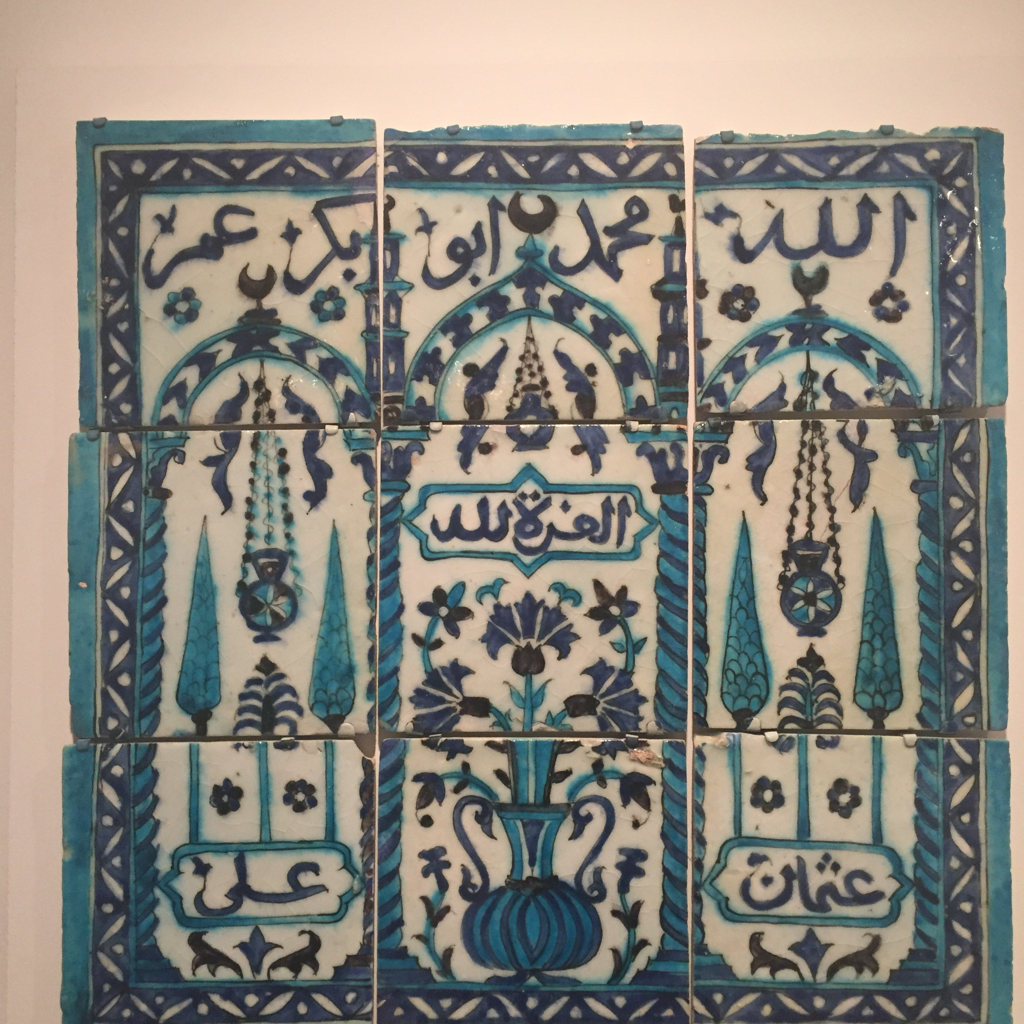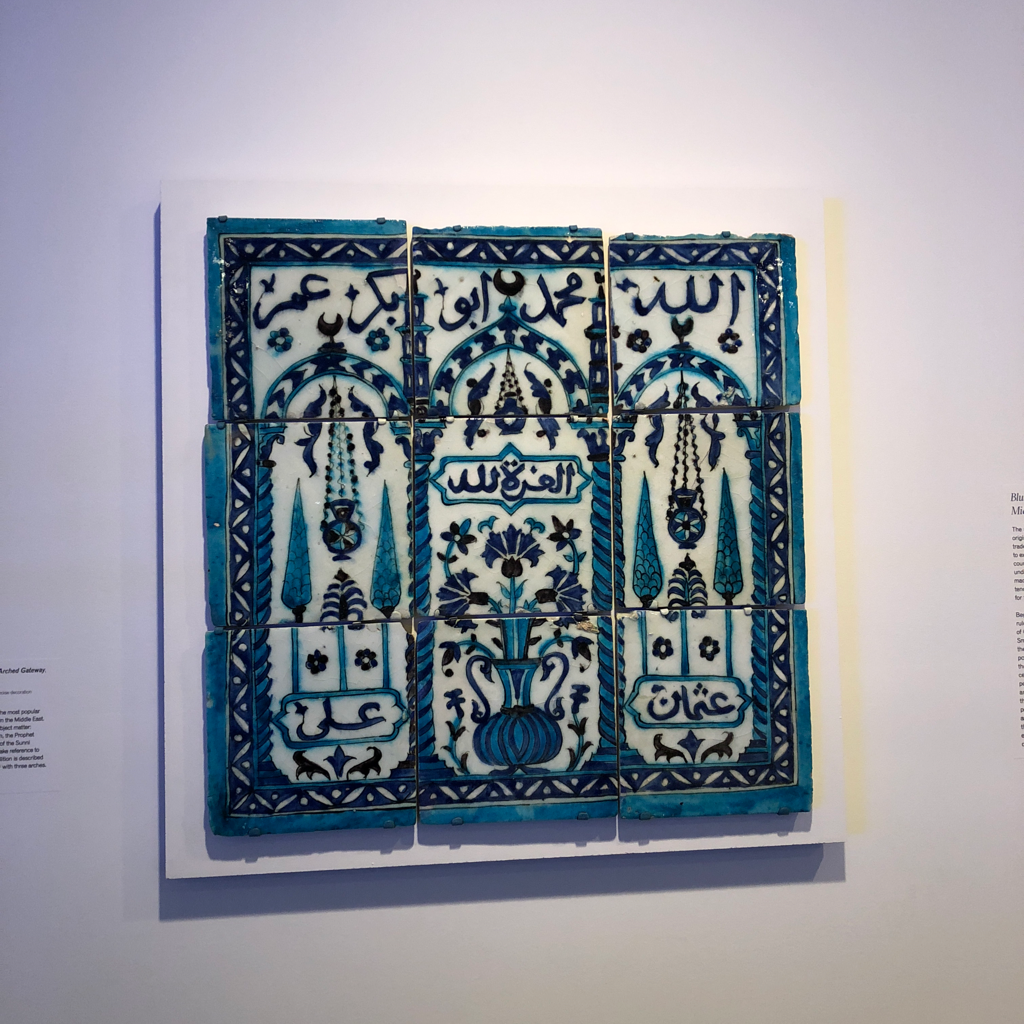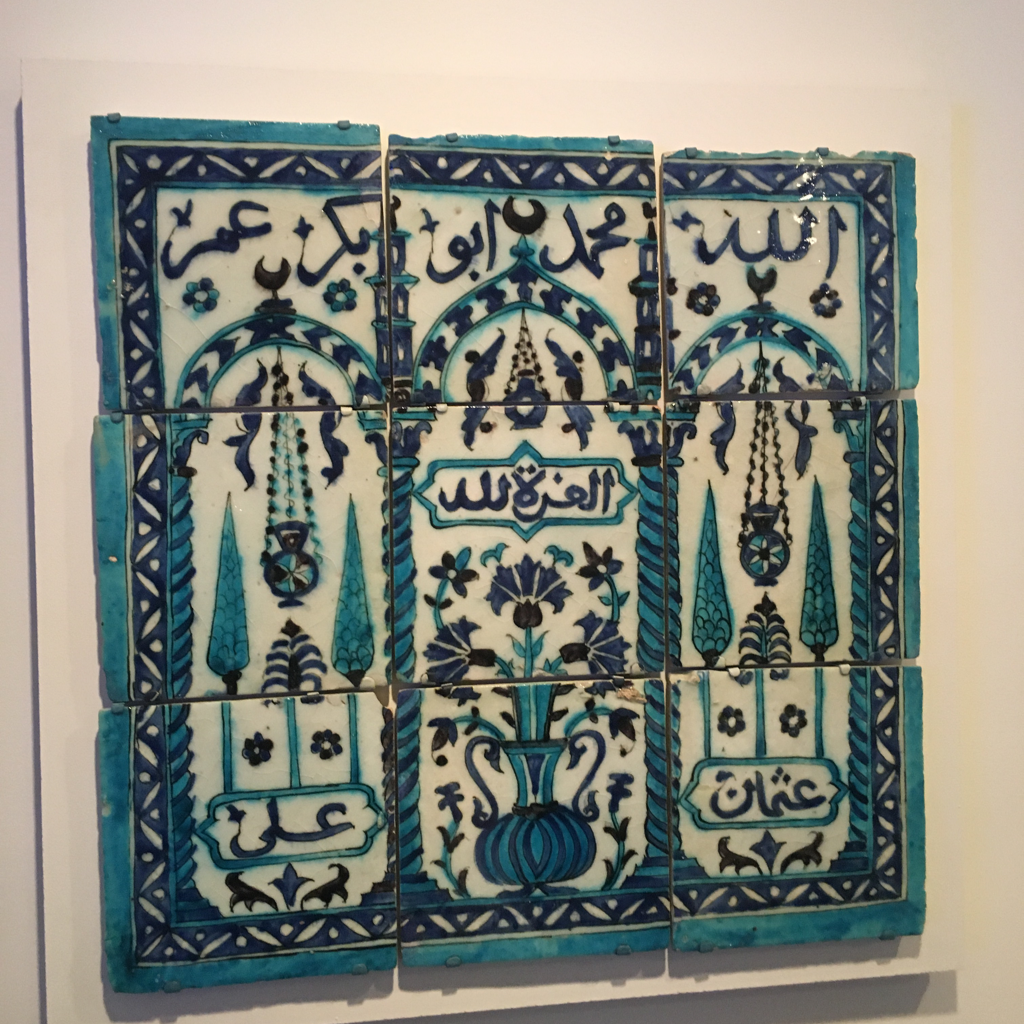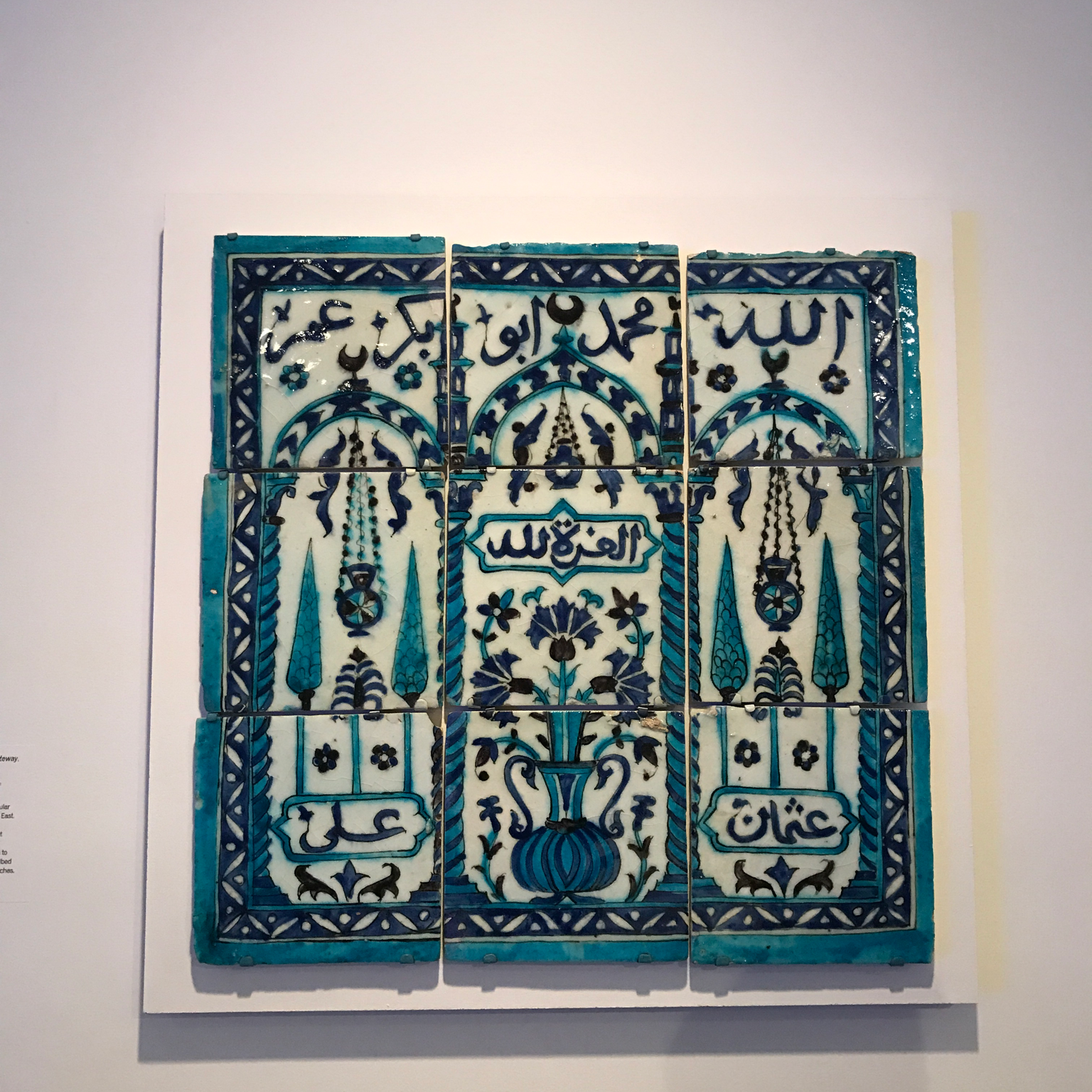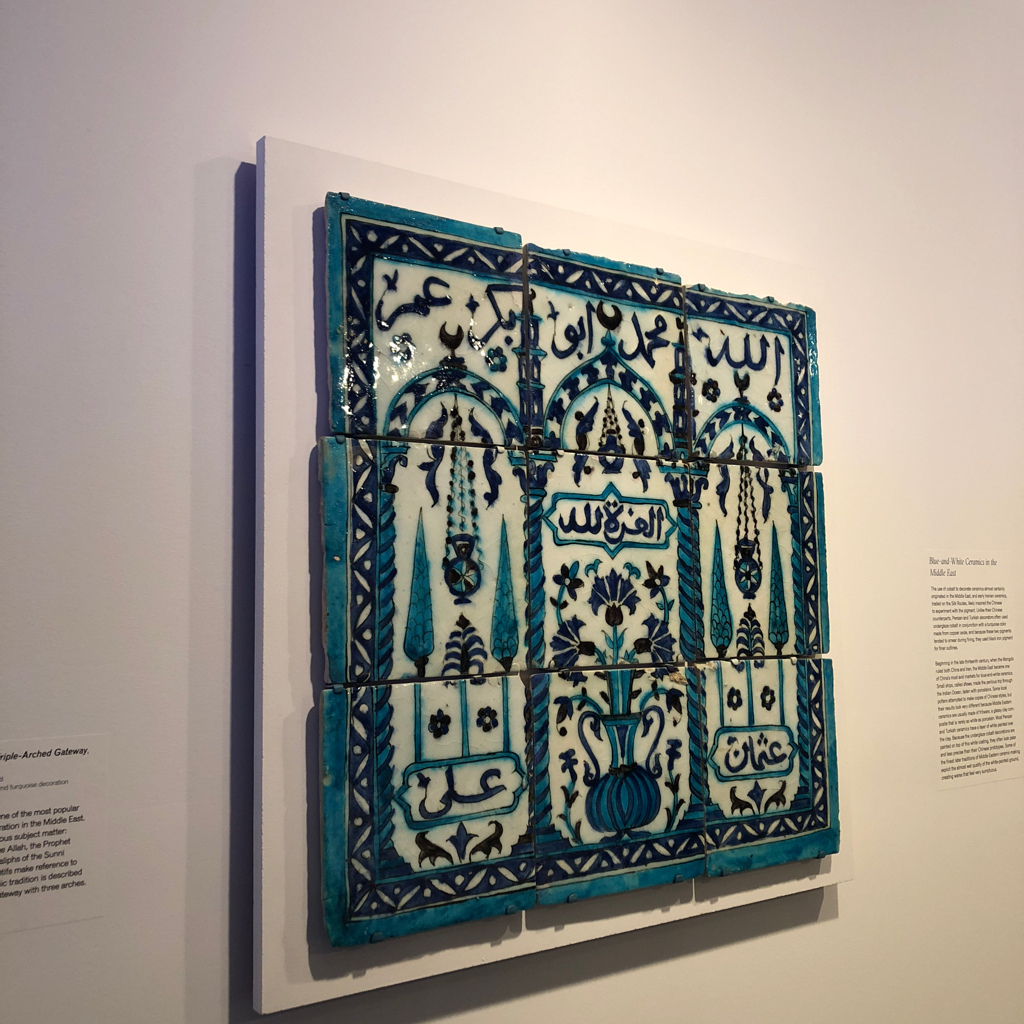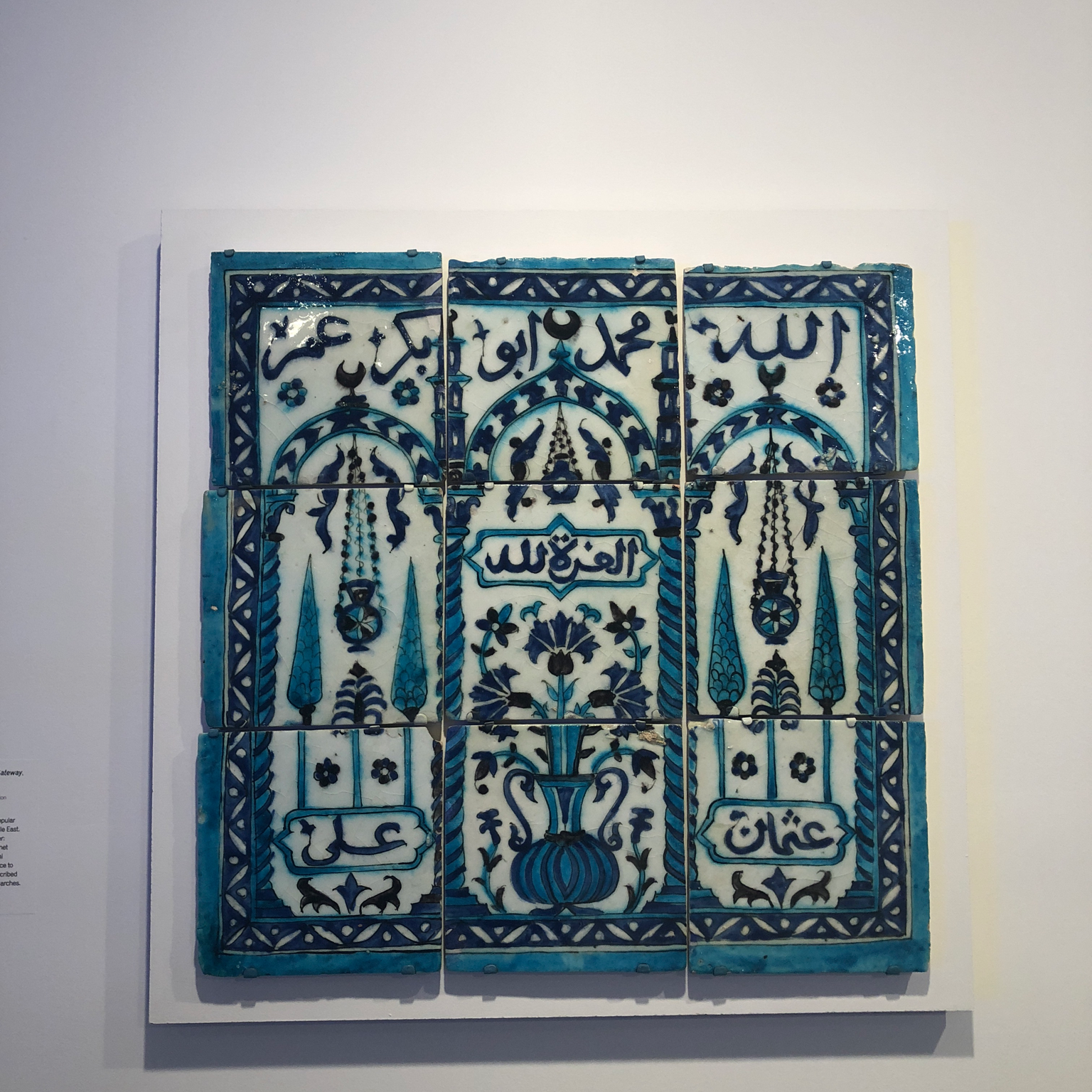
Panel of Tiles
Arts of the Islamic World
On View: Arts of the Islamic World, 2nd floor
Glazed ceramic tiles were one of the most popular forms of architectural decoration in the Middle East. This panel of tiles has religious subject matter: the Arabic inscriptions name Allah, the Prophet Muhammad, and the four caliphs of the Sunni tradition. The decorative motifs make reference to Paradise, which in the Islamic tradition is described as a garden entered via a gateway with three arches.
MEDIUM
Ceramic; fritware, painted in cobalt blue and turquoise under a transparent glaze
DATES
17th century
DYNASTY
Ottoman
PERIOD
Ottoman Period
DIMENSIONS
28 x 28 x 1 in. (71.1 x 71.1 x 2.5 cm)
wallmount (overall with wall mount): 31 1/2 x 31 1/2 x 2 1/2 in. (80 x 80 x 6.4 cm) (show scale)



INSCRIPTIONS
In Arabic, painted from top right-to-left: "الله محمد ابو بکر عمر " [God Muhammad Abu Bakr Umar]; from middle right-to-left, "العزة لله" [Glory to God]; from bottom right-to-left, “عثمان علي” [Uthman Ali].
Transcribed by Abdullah Ghouchani, with English translation by Caitlin McKenna.
COLLECTIONS
Arts of the Islamic World
ACCESSION NUMBER
2002.3
CREDIT LINE
Hagop Kevorkian Fund
PROVENANCE
Prior to 2002, provenance not yet documented; April 23, 2002, purchased from Christie's London, Islamic Art and Manuscripts, lot 200 by the Brooklyn Museum.
Provenance FAQ
MUSEUM LOCATION
This item is on view in Arts of the Islamic World, 2nd floor
CAPTION
Panel of Tiles, 17th century. Ceramic; fritware, painted in cobalt blue and turquoise under a transparent glaze, 28 x 28 x 1 in. (71.1 x 71.1 x 2.5 cm). Brooklyn Museum, Hagop Kevorkian Fund, 2002.3. Creative Commons-BY (Photo: Brooklyn Museum, 2002.3_PS9.jpg)
IMAGE
overall, 2002.3_PS9.jpg. Brooklyn Museum photograph, 2016
"CUR" at the beginning of an image file name means that the image was created by a curatorial staff member. These study images may be digital point-and-shoot photographs, when we don\'t yet have high-quality studio photography, or they may be scans of older negatives, slides, or photographic prints, providing historical documentation of the object.
RIGHTS STATEMENT
Creative Commons-BY
You may download and use Brooklyn Museum images of this three-dimensional work in accordance with a Creative Commons license. Fair use, as understood under the United States Copyright Act, may also apply.
Please include caption information from this page and credit the Brooklyn Museum. If you need a high resolution file, please fill out our online application form (charges apply).
For further information about copyright, we recommend resources at the United States Library of Congress, Cornell University, Copyright and Cultural Institutions: Guidelines for U.S. Libraries, Archives, and Museums, and Copyright Watch.
For more information about the Museum's rights project, including how rights types are assigned, please see our blog posts on copyright.
If you have any information regarding this work and rights to it, please contact copyright@brooklynmuseum.org.
RECORD COMPLETENESS
Not every record you will find here is complete. More information is available for some works than for others, and some entries have been updated more recently. Records are frequently reviewed and revised, and we welcome any additional information you might have.


